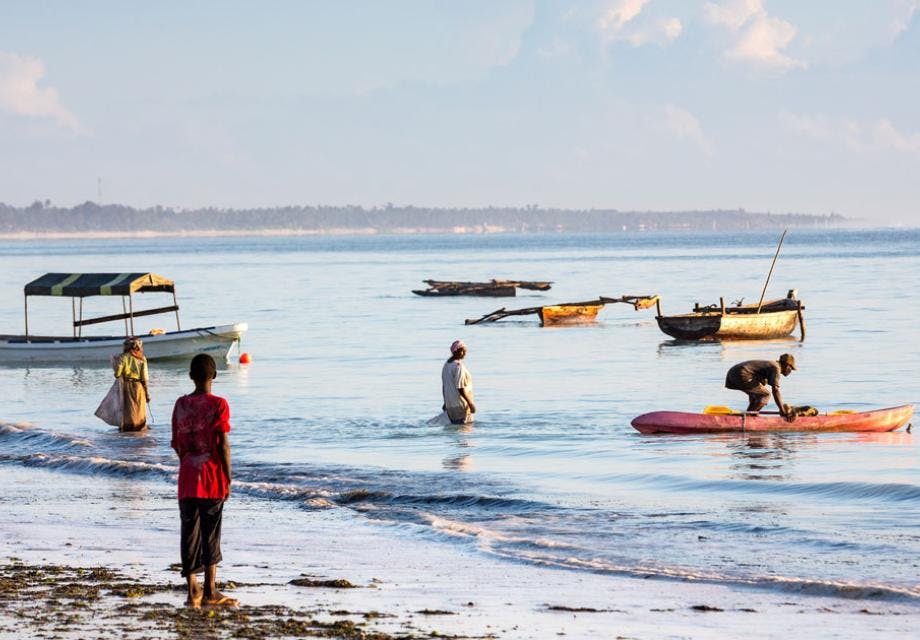New HIV infections fall by more than half in Ugandan fishing communities
Hester Phillips
24 September 2019
HIV incidence more than halved among people from fishing communities in Lake Victoria, Uganda, after rapid expansion of HIV services.
The introduction and rapid expansion of a combination of HIV services in four Ugandan fishing communities has led to the significant decline of HIV incidence, new research finds.
The study assessed the uptake and impact of a combination of HIV interventions after they were introduced to four fishing communities in Lake Victoria in 2011.
Around 40% of people in these communities are living with HIV where high levels of mobility, transactional sex, multiple sexual partnerships, and alcohol use drive HIV transmission.
This, coupled with the presence of large proportions of men who tend to access HIV prevention, testing and treatment services less than women, provides a challenging environment for reducing the number of new infections.
The four fishing communities had little access to HIV services before 2011. After 2011 the US President’s Emergency Plan for AIDS Relief (PEPFAR) and the Centers for Disease Control and Prevention Uganda supported the Rakai Health Sciences Program to introduce and expand HIV services in the area. This included a new community-based HIV clinic and mobile camps offering voluntary medical male circumcision.
Also, from 2013 – three years before ‘test-and-treat’ was adopted nationally in Uganda – anyone from these communities testing positive for HIV was eligible for antiretroviral treatment (ART) regardless of the level of virus in their body.
Researchers conducted five surveys between 2011 and 2017, involving around 8,900 people in total from the four fishing communities. Participants were aged between 15 and 49, with a median age of 30, and evenly split between men and women.
From the baseline survey in 2011/12 to the final survey in 2016/17, the proportion of people testing for HIV increased from 68% to 96%, the proportion of circumcised men increased from 35% to 65%, the proportion of HIV positive people on ART increased from 16% to 82% and the rate of people living with HIV who were virally suppressed increased from 34% to 80%.
ART coverage and viral suppression was found to be higher among women than men in each survey. In 2016/17, 85% of women living with HIV in the four communities were on ART compared with 78% of HIV positive men. Younger age groups were less likely to be on treatment than older people. For example, in 2016/17, ART coverage was 59% lower in young men (aged 15–24) than in men aged between 40 and 49. The difference between women in the same age groups was 25%.
As a result of these interventions, HIV incidence more than halved, from 3.43 per 100 person-years in 2011/12 to 1.59 per 100 person-years in 2016/17. Similar declines in incidence were seen among both men and women.
Although the male circumcision rate of 65% falls short of the UNAIDS and PEPFAR coverage goal of 80%, male circumcision was found to be strongly protective, decreasing men’s risk of HIV acquisition by around 54%. Younger men were found to be more likely than older men to get circumcised.
However, sexual risk-taking did not decrease during the study period. This is despite the presence of PEPFAR’s DREAMS programme in the largest of the four fishing communities, which offered economic and vocational strengthening and condom promotion among other interventions. The number of non-marital sexual partners among HIV negative people did not reduce, while the proportion of people using condoms consistently with casual partners fell, from 41% to 35%.
This is the first study to show that combined HIV interventions can be successfully expanded in communities where HIV is hyper-endemic and can have a substantial effect on HIV incidence. It suggests that further rapid expansion of combination HIV interventions in similar fishing communities is feasible and could have a significant, population-level impact on the rate of new infections.
However, as incidence in the four communities was still 15-times higher in 2016/17 than the incidence rate required to control HIV, much more must be done to reduce new infections further.
Hyper-endemic communities such as these might need particularly high coverage levels of ART and male circumcision to achieve epidemic control. The absence of change in relation to sexual risk-taking also suggests more community-led, effective behaviour change programmes are needed. Newer biomedical interventions, such as pre-exposure prophylaxis, which was not available to these communities during the study period, should also be explored.
Get our news and blogs by email
Keep up-to-date with all our latest news stories and blogs by signing up to the Be in the KNOW news digest.
